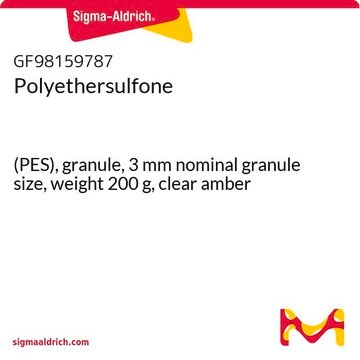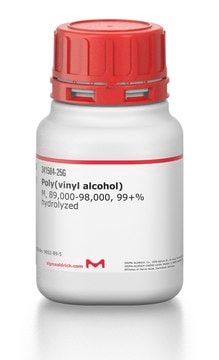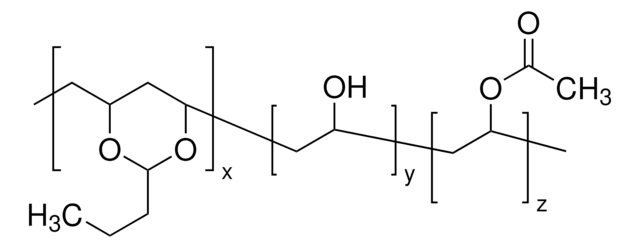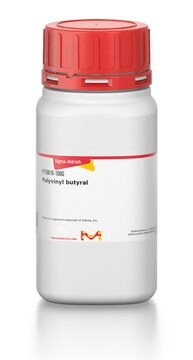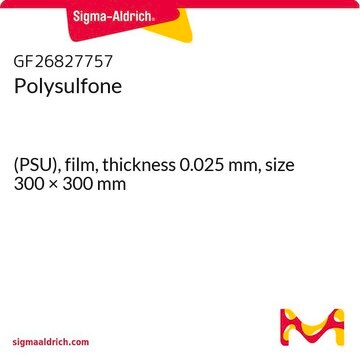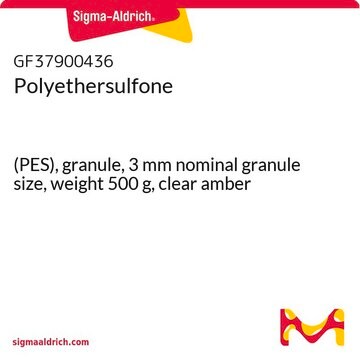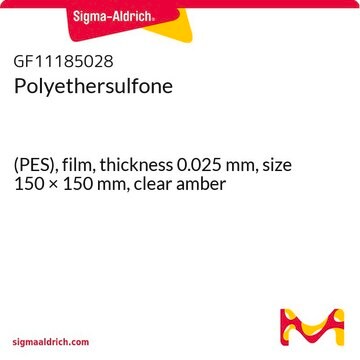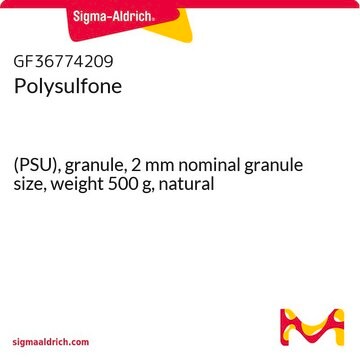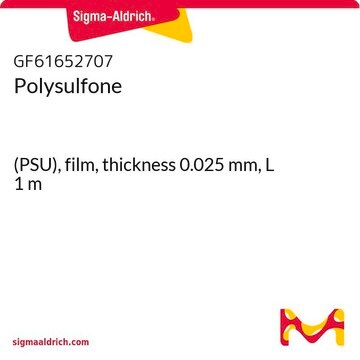428302
Polysulfone
average Mw ~35,000 by LS, average Mn ~16,000 by MO, pellets (Transparent)
Synonym(s):
Poly[oxy-1,4-phenylenesulfonyl-1,4-phenyleneoxy-1,4-phenylene(1-methylethylidene)-1,4-phenylene], Polysulfone resin
About This Item
Recommended Products
form
pellets (Transparent)
Quality Level
autoignition temp.
1022 °F
melt index
6.5 g/10 min (343°C/0.3 Mpa)
mol wt
average Mn ~16,000 by MO
average Mw ~35,000 by LS
reduced viscosity
0.37-0.39 dL/g, 0.2 % (w/v) in chloroform(25 °C)(lit.)
density
1.24 g/mL at 25 °C (lit.)
SMILES string
CC(C)(c1ccc(O)cc1)c2ccc(O)cc2.Oc3ccc(cc3)S(=O)(=O)c4ccc(O)cc4
InChI
1S/C15H16O2.C12H10O4S/c1-15(2,11-3-7-13(16)8-4-11)12-5-9-14(17)10-6-12;13-9-1-5-11(6-2-9)17(15,16)12-7-3-10(14)4-8-12/h3-10,16-17H,1-2H3;1-8,13-14H
InChI key
ZUZZUJNBGCVPLQ-UHFFFAOYSA-N
Looking for similar products? Visit Product Comparison Guide
Application
Features and Benefits
Physical form
Storage Class
11 - Combustible Solids
wgk_germany
WGK 3
flash_point_f
Not applicable
flash_point_c
Not applicable
ppe
Eyeshields, Gloves, type N95 (US)
Choose from one of the most recent versions:
Certificates of Analysis (COA)
Don't see the Right Version?
If you require a particular version, you can look up a specific certificate by the Lot or Batch number.
Already Own This Product?
Find documentation for the products that you have recently purchased in the Document Library.
Customers Also Viewed
Articles
Polymer electrolyte membrane (PEM) fuel cells offer high efficiency and low-temperature operation, reducing oil use in light-duty vehicle transportation.
Our team of scientists has experience in all areas of research including Life Science, Material Science, Chemical Synthesis, Chromatography, Analytical and many others.
Contact Technical Service

